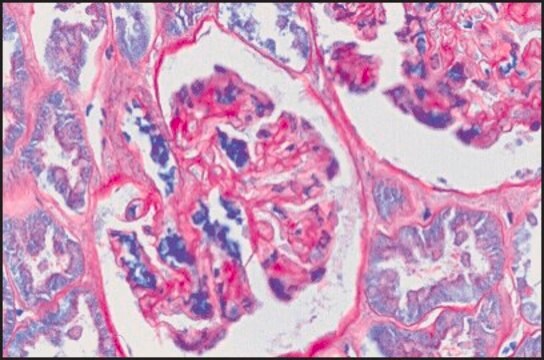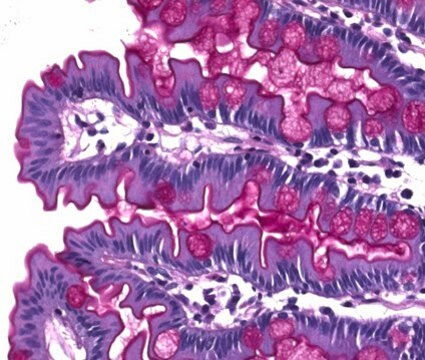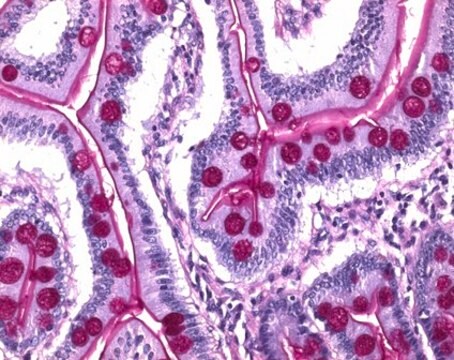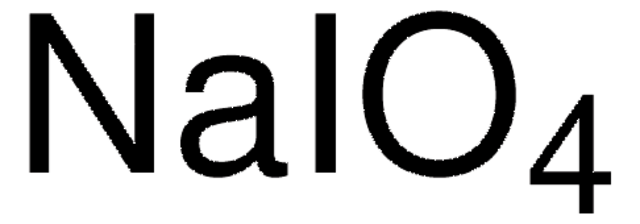P7875
Periodic acid
ReagentPlus®, ≥99.0%
About This Item
Prodotti consigliati
Livello qualitativo
Nome Commerciale
ReagentPlus®
Saggio
≥99.0%
Stato
powder or crystals
Impiego in reazioni chimiche
reagent type: oxidant
tecniche
toxicology assay: suitable
Punto di fusione
122 °C (lit.)
Solubilità
water: 100 mg/mL, clear, colorless
Stringa SMILE
OI(O)(O)(O)(O)=O
InChI
1S/H5IO6/c2-1(3,4,5,6)7/h(H5,2,3,4,5,6,7)
TWLXDPFBEPBAQB-UHFFFAOYSA-N
Cerchi prodotti simili? Visita Guida al confronto tra prodotti
Descrizione generale
Applicazioni
- Oxidation of alcohols to ketones and aldehydes.
- Oxidation hydroxylamine derivatives.
- Oxidation of arenes to quinones.
It can also be used:
- As a stoichiometric oxidant with chromium (IV) acetate for the oxidation of tertiary C−H bonds to tertiary alcohols.
- In combination with chromium oxide to oxidize primary alcohols to carboxylic acids; alkylbenzenes to benzoic acids; and cyclic benzyl ethers to the corresponding lactones.
- In the selective oxidation of sulfides to sulfoxides using FeCl3 as a catalyst.
Note legali
Non trovi il prodotto giusto?
Prova il nostro Motore di ricerca dei prodotti.
Avvertenze
Danger
Indicazioni di pericolo
Consigli di prudenza
Classi di pericolo
Aquatic Acute 1 - Aquatic Chronic 1 - Eye Dam. 1 - Ox. Sol. 1 - Skin Corr. 1B - STOT RE 1 Oral
Organi bersaglio
Thyroid
Codice della classe di stoccaggio
5.1A - Strongly oxidizing hazardous materials
Classe di pericolosità dell'acqua (WGK)
WGK 3
Punto d’infiammabilità (°F)
Not applicable
Punto d’infiammabilità (°C)
Not applicable
Scegli una delle versioni più recenti:
Possiedi già questo prodotto?
I documenti relativi ai prodotti acquistati recentemente sono disponibili nell’Archivio dei documenti.
I clienti hanno visto anche
Il team dei nostri ricercatori vanta grande esperienza in tutte le aree della ricerca quali Life Science, scienza dei materiali, sintesi chimica, cromatografia, discipline analitiche, ecc..
Contatta l'Assistenza Tecnica.











